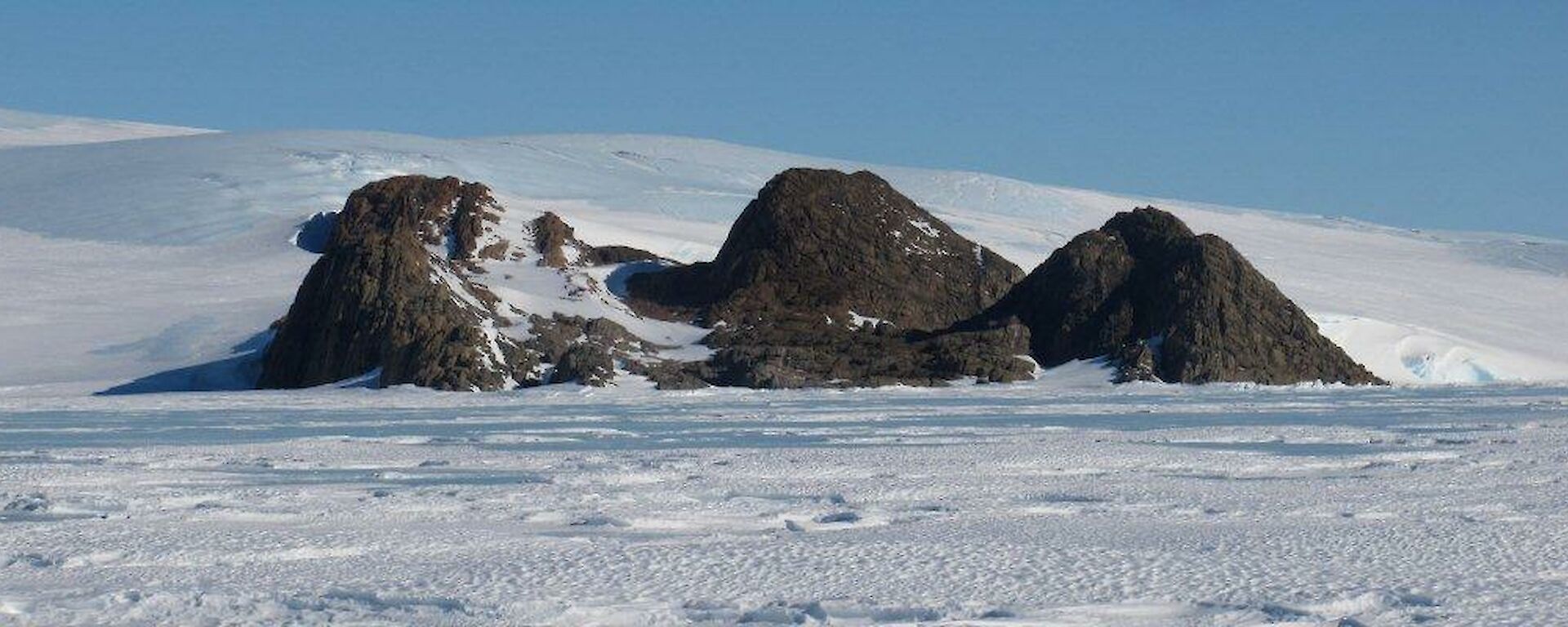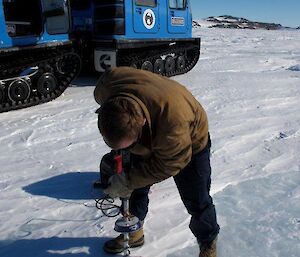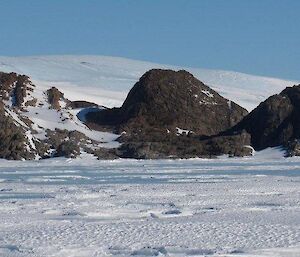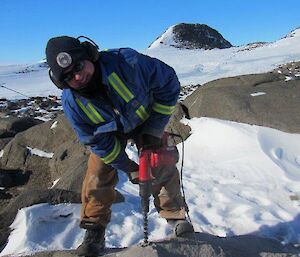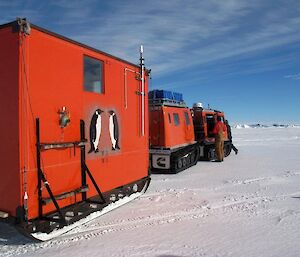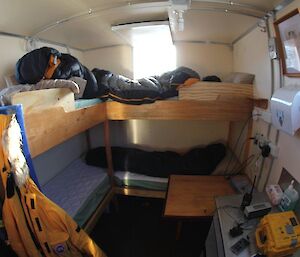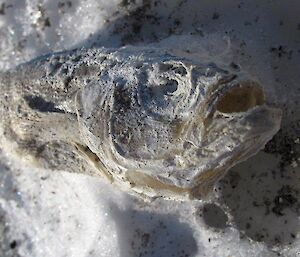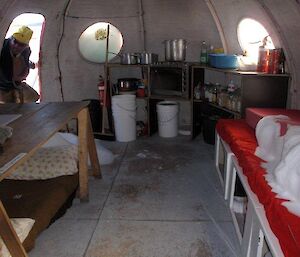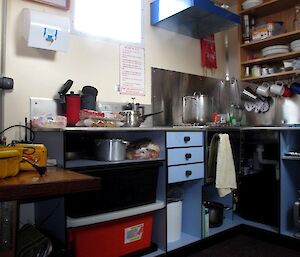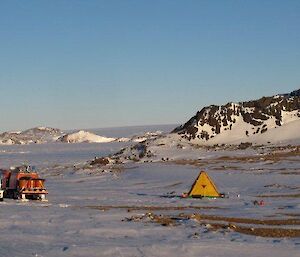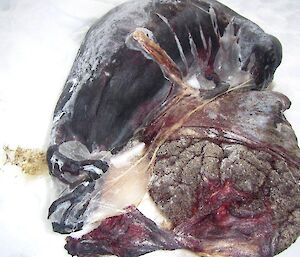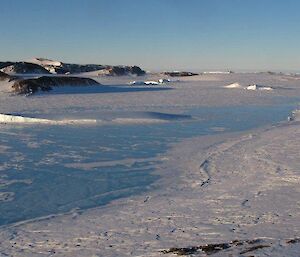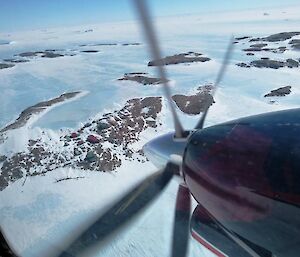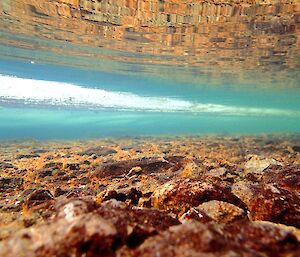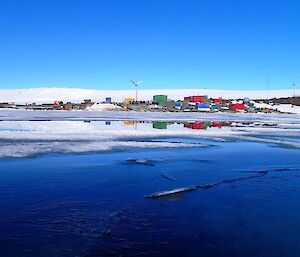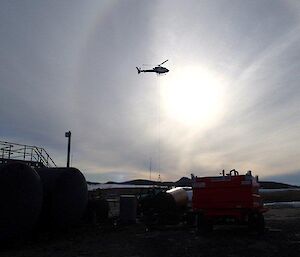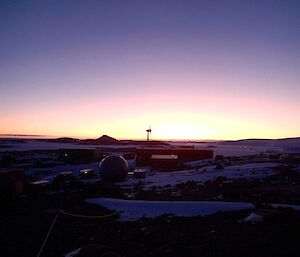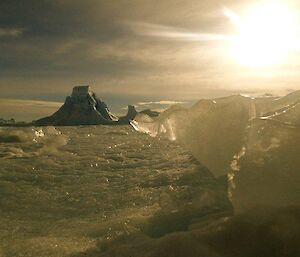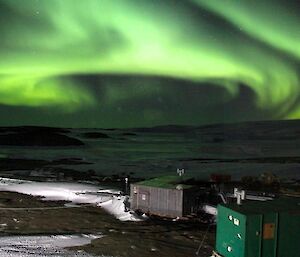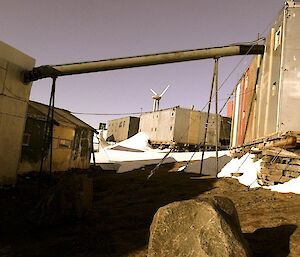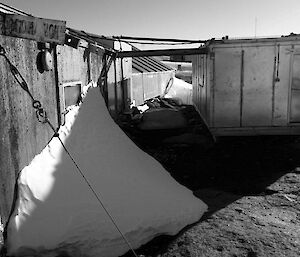The last trip to Ledinghams depot was in September 2011. The depot is approximately 160 km from Mawson station, so not an easy weekend jaunt away — we had a seven day return trip. Geological investigation took place there by the ANARE in 1961, the physical depot appears to be established to support science at Stillwell Hills in the mid nineties and has provided shelter for further science and maintenance trips since.
It’s not every year that expeditioners get the opportunity to visit Ledinghams. After reading previous trip reports, it appeared there was further maintenance needed and also to fill in some information gaps about the infrastructure that was out there. With the refurbishment and relocation of Colbeck hut, en route to Colbeck seemed like a good opportunity to continue onto to Ledinghams depot. Our crew: Aidan Heather (trip leader), Heidi Godfrey, Ewan Denholm, Chris Hill, Lydia Dobromilsky and Jens Steenbach. This group was comprised of an electrician, field trainer, plumber, carpenter, stores-person and diesel mechanic which was a good range of trades and skill sets needed for a long traverse.
Colbeck hut had a successful relocation. We spent the day anchoring the hut, and we repacked our Hägglunds and sled, and departed for Ledinghams at 0900. The travel ranged from heavy sastrugi to smooth blue ice. We drilled the sea ice at every waypoint en route and any suspect looking lead cracks. This information gave us confidence in what we were driving over was good quality sea ice, our average depth being 1.3 metres thick. The previous report detailed poor quality ice and thick wet snow with numerous bogging stories, only two weeks earlier than our trip three years prior. Along the way were the usual suspects of seals lounging around, emperor penguins wandering from somewhere to somewhere, a fish high and dry (literally) and a stillborn seal abandoned by a lead crack.
We stopped off at Tilley Nunatuk depot on the way to check what was there and what condition it was in. A small stash of emergency fuel and a food ration box was tucked away and marked by bamboo. We removed one fuel container that was degrading. From here it was a further 25 km to Ledinghams depot and a really scenic area to drive through. The William Scoresby Bay is a large area spanning around 15 km x 10 km area, with the coastline dotted by rocky outcrops 100–300 m high, with Ledinghams depot located on the western side of the bay on an outcrop of islands linked by permanent ice.
We spent the next day around the hut. We pulled out all the food ration packs, opened the lids and found them in all sorts of various states. One we opened was a complete frozen block of ice that contained spare kitchen products/toothbrushes and a toilet seat! Gas maintenance was undertaken, ice removed from around the hut, fuel depot checked over and a general tidy up of the hut and facilities was completed, in between numerous cups of tea and coffee.The weather played nice and we spent a stunning day working in warm temps and calm wind.
We did have one visitor from the emperor penguin colony some 8–10 km away. Our visitor came right into camp, wandered around, watched us work and then continued on its way. We're not sure where and why he was heading in the direction he was, but the emperors seem to do that.
That evening we were greeted with a gorgeous sunset and the team took the opportunity to wander around the area. A drum on top of the local hill was visited and the logbook up there provided some interesting reading dating back to the dog sled days. It was remarkable to think of those lads back then dog sledding this far, and they must have been super fit and hardy men. A part of me is very envious of that era and those opportunities with the dogs, but it is also really nice to read about them and to have met a few of the expeditioners that are still with the Australian Antarctic Division that share their stories and their passion about those days. It is difficult not to be picked up and carried along by their enthusiasm and dedication to the work and science.
The next day we headed back to Colbeck. The wind had picked up and our surface definition was limited making it a tiring trip back on the eyes and body. Colbeck hut greeted us with a warm bright welcome. We all spent the remaining afternoon having a nana nap and drinking tea. It was also nice to have some time to reflect back on the trip up to now.
Our journey back to Mawson was uneventful. What we observed in the week away was a bit of movement in one specific lead crack that had opened up a metre exposing a very thin film of ice over open ocean, a sign of the sea ice becoming more active, and that a change in the sea ice season has begun. A detour was easily found 300 m away. We pulled into Mawson mid afternoon and began the tidy up. It was nice to be home and see friends we hadn’t seen for a week, plus scotch fillet and roast chicken were on the menu for dinner and a hot spa was in order after.
What a fantastic journey to a far away area! It was a privilege to be able to get out and visit Ledinghams Depot. And so our season goes on and our adventures continue…

